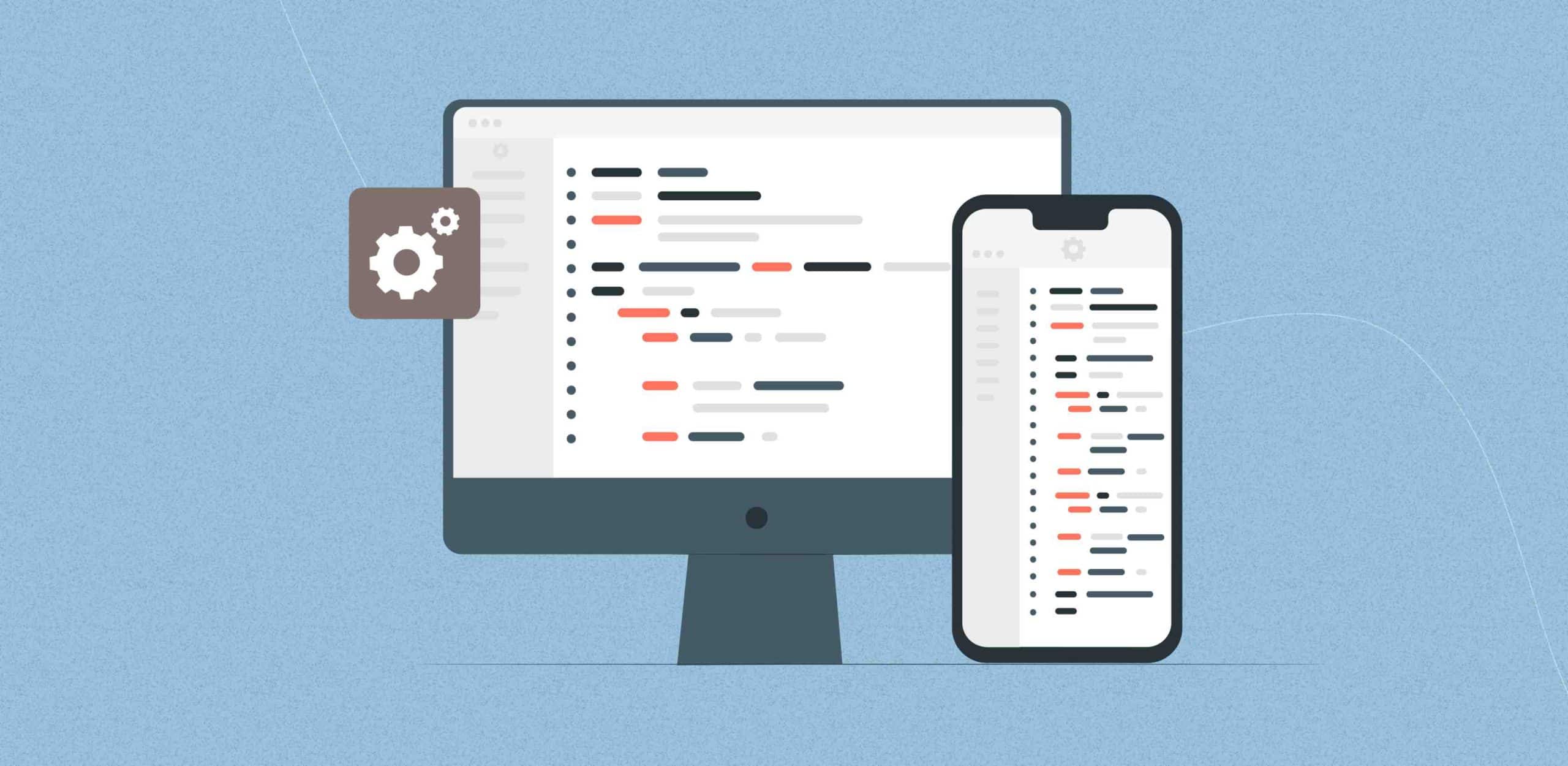Mobile app development has witnessed an unprecedented surge in recent years, revolutionizing the way we interact with technology. As the demand for mobile applications continues to soar, it becomes crucial for businesses to recognize the significance of user experience (UX) and user interface (UI) design.
In this blog post, we will delve into the world of UX/UI design and explore its pivotal role in enhancing user engagement within mobile app development services. Whether you are a mobile app development company or an aspiring app entrepreneur, understanding the importance of UX/UI design will be paramount to your success.
What is Mobile App Development?
Mobile app development refers to the process of creating software applications specifically designed to run on mobile devices such as smartphones and tablets. It involves the development of applications for mobile operating systems like iOS (used by Apple devices) or Android (used by various mobile devices). Mobile app development encompasses a range of tasks, including designing the user interface, developing the app’s functionality, integrating with backend systems or databases, and testing the app for performance and usability.
Mobile app development can be divided into native app development and cross-platform app development. Native app development involves creating apps that are specific to a particular platform, utilizing the native programming languages and frameworks provided by the platform. For example, iOS apps are typically developed using Swift or Objective-C, while Android apps are built with Java or Kotlin.
On the other hand, cross-platform app development involves developing apps that can run on multiple platforms using a single codebase. This approach allows developers to write the code once and deploy it on multiple platforms. Cross-platform frameworks like React Native, Flutter, or Xamarin facilitate this process by providing tools and libraries that enable developers to create apps with a shared codebase.
Mobile app development involves various stages, including ideation and conceptualization, requirement gathering, design, development, testing, deployment, and ongoing maintenance and updates. Throughout the development process, UX/UI design plays a crucial role in creating user-friendly and engaging apps that meet the needs and expectations of the target audience.
What is UI/UX Design?
UI/UX design refers to the process of creating a visually appealing and intuitive user interface that provides a seamless and delightful user experience. It encompasses a range of design elements, including layout, colors, typography, icons, and interactive elements, all aimed at enhancing user satisfaction and engagement. UX design focuses on understanding user behavior, needs, and goals, while UI design focuses on the visual and interactive aspects of the app. A successful mobile app should strike a balance between both, offering a visually appealing interface coupled with a smooth and intuitive user experience.
Take your business to the next level with a user-friendly mobile app!
How UX/UI Design is important in Mobile App Development?
- User Research: User research is a crucial step in the UX/UI design process for mobile app development. It involves gathering insights and understanding the needs, preferences, and pain points of your target audience. By conducting thorough research, you can gain valuable data that informs your design decisions and helps create an app that resonates with users. User research methods can include surveys, interviews, usability testing, and analyzing user behavior patterns. This data-driven approach ensures that your app is tailored to meet the expectations and requirements of your users, resulting in higher user engagement and satisfaction.
- Intuitive Navigation: Intuitive navigation is key in mobile app development to provide a seamless user experience within a mobile app. Users should be able to navigate through the app effortlessly, finding the desired information or performing actions without confusion or frustration. A well-designed navigation system includes clear and logical menu structures, easily accessible search functionality, and intuitive gestures. The app’s structure should guide users through the different screens and functionalities in a way that feels natural and intuitive. By implementing intuitive navigation, you enhance user engagement by reducing friction and allowing users to focus on their tasks or desired content.
- Consistent Branding: Consistent branding is vital for creating a cohesive and memorable user experience. Incorporating your brand’s visual elements, such as colors, typography, logos, and icons, throughout the app establishes a strong brand identity and familiarity. Consistency in branding helps users recognize and associate your app with your brand, building trust and loyalty. It also creates a unified experience across different touchpoints, such as your website or other marketing channels. Consistent branding elements contribute to a visually appealing app that engages users and reinforces your brand image.
- Responsive Design: With the multitude of mobile devices available in various sizes and resolutions, it is essential to adopt a responsive design approach. Responsive design ensures that your app adapts and provides an optimal viewing and interaction experience across different screen sizes and orientations. Users should be able to comfortably use your app on smartphones, tablets, or even larger devices like phablets. By designing for responsiveness, you eliminate user frustration caused by elements that are too small to tap or read on certain devices. A responsive design enhances user engagement by offering a consistent and accessible experience, regardless of the device being used.
- Streamlined Onboarding: The onboarding process is the user’s first interaction with your app, making it crucial to create a positive first impression. An effective onboarding experience guides users through the initial setup and introduces them to key features and functionalities. It should be intuitive, concise, and provide clear instructions. By streamlining the onboarding process, you reduce the learning curve and make it easier for users to understand and engage with your app. A smooth onboarding experience sets the tone for the rest of the user journey, leading to improved user engagement and retention.
- Performance Optimization: Optimizing app performance is essential for providing a smooth and responsive user experience. Slow-loading screens, laggy interactions, or crashes can significantly impact user engagement and lead to user abandonment. Performance optimization involves minimizing loading times, optimizing the app’s code, and ensuring efficient use of device resources. By prioritizing performance, you create an app that responds quickly to user interactions, loads content swiftly, and provides a seamless experience. A fast and responsive app encourages users to explore more features, interact with content, and stay engaged.
- Visual Hierarchy and Clarity: Designing an app with a clear visual hierarchy and clarity is crucial for guiding users’ attention and enhancing usability. Visual hierarchy refers to the arrangement of elements in a way that emphasizes their importance and guides users’ focus. Important information or actions should be prominently displayed and easily distinguishable from less critical elements. Clear and concise text, appropriate use of colors, and well-defined call-to-action buttons contribute to a visually appealing and clutter-free interface. Additionally, the effective use of whitespace improves readability and reduces visual noise. By incorporating visual hierarchy and clarity, you create an app that is visually pleasing, easy to navigate and engages users effectively.
Conclusion
In today’s competitive landscape, mobile app development companies must prioritize UX/UI design to create compelling and engaging experiences. By understanding what UI/UX design entails and implementing key design aspects, businesses can attract and retain users, drive higher engagement, and achieve their desired goals.
If you are looking to implement or custom-develop a mobile app solution, don’t hesitate to contact us. Our team of experienced professionals can assist you in creating a mobile app that embodies exceptional UI/UX design, resulting in improved user engagement and overall success.
Let’s transform your business for a change that matters.
F. A. Q.
Do you have additional questions?
Why is UX/UI design important for mobile app development?
UX/UI design is crucial for mobile app development as it focuses on creating a visually appealing and intuitive user interface coupled with a seamless user experience. It enhances user engagement by understanding user needs, preferences, and behavior patterns, resulting in higher satisfaction and better app performance.
How does user research contribute to effective UX/UI design in mobile app development?
User research helps gather valuable insights into user preferences, pain points, and expectations. By conducting thorough research, app developers can make informed design decisions and tailor the app to meet user requirements. User research ensures that the app resonates with users, leading to improved engagement and satisfaction.
What role does intuitive navigation play in enhancing user engagement?
Intuitive navigation ensures that users can easily navigate through the app, find information, and perform actions without confusion or frustration. A well-designed navigation system with clear menus, search functionality, and intuitive gestures reduces friction and allows users to focus on their tasks or desired content, leading to higher engagement levels.
Why is consistent branding important in mobile app design?
Consistent branding creates a cohesive and memorable user experience. By incorporating brand elements such as colors, typography, logos, and icons throughout the app, users can recognize and associate the app with the brand. Consistent branding builds trust, loyalty, and reinforces the brand image, resulting in increased user engagement.
How does responsive design impact user engagement?
Responsive design ensures that the app provides an optimal viewing and interaction experience across different screen sizes and orientations. It allows users to comfortably use the app on various devices, eliminating frustrations caused by elements that are too small or difficult to read. Responsive design enhances user engagement by offering a consistent and accessible experience, regardless of the device being used.













